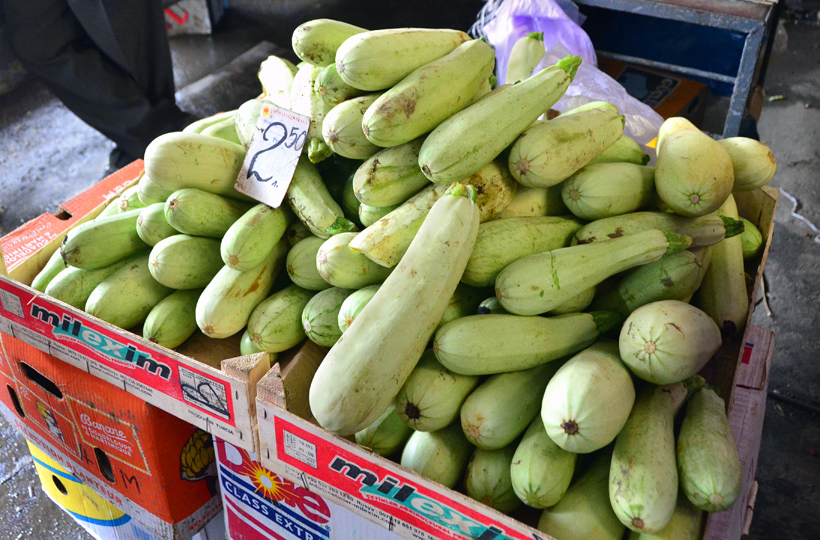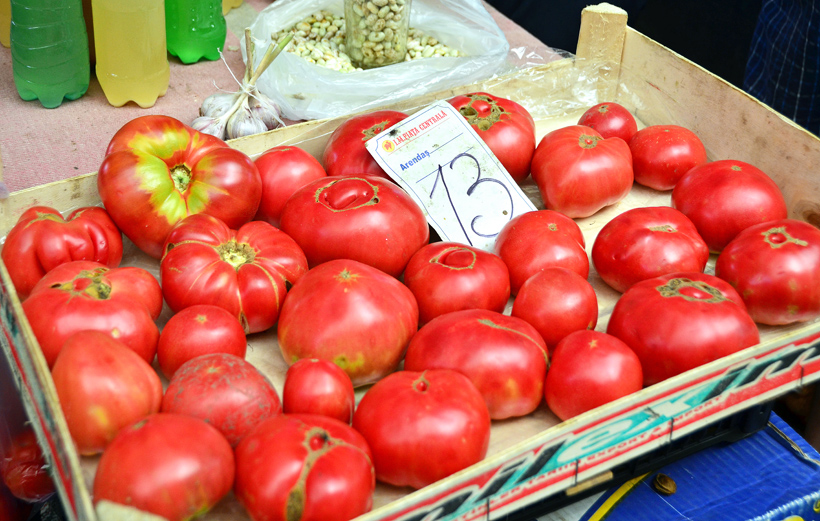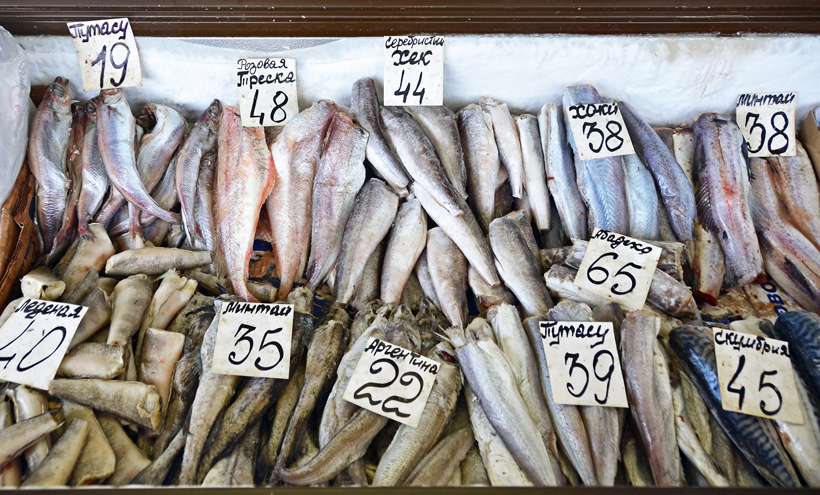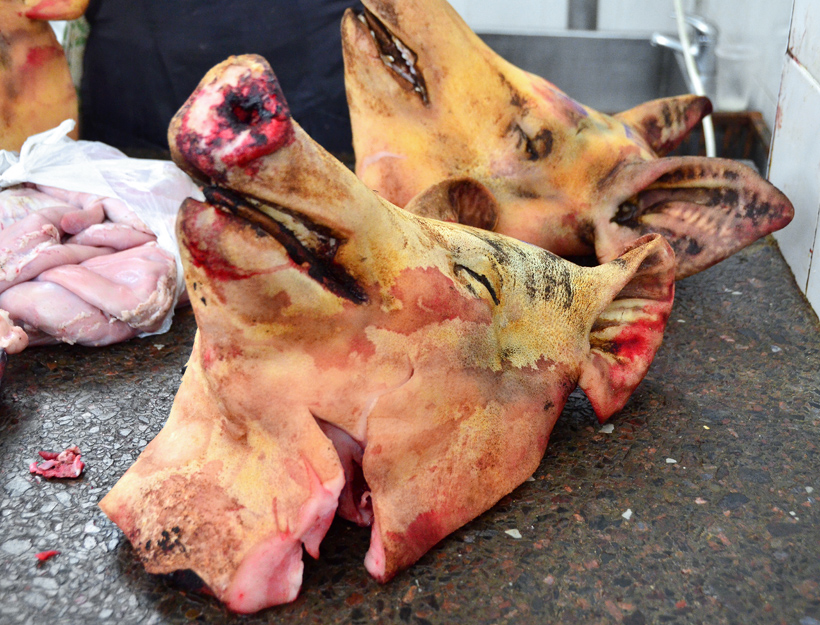Last time, I took a look at Moldovan food as it’s served in restaurants. Since Moldovans cook at home a lot more often than they dine in restaurants, let’s also visit the Central Market in Chișinău, where many provisions can be bought.
Founded in 1825, Piaţa Centrală is located right in the city center, not far from the bus station (a proximity resulting in double the bustling crowds). It’s not as impressive as the markets of Tbilisi or Tashkent, but it does give a good idea of Moldovan cuisine. To complement the pictures, I will also mention some recipes from Sergey Donika’s Moldovan Cuisine. With 493 recipes, this cookbook contains more stuff than I’ll ever cook in my lifetime.
Let’s start with some baked goods: rolls with liver, cheese, mushrooms, cabbage or potato, a kind of hot dog, apple pastries, and cakes with raisins. (Thank you, market workers, for the detailed labels!) The rolls, or invirtita, are definitely a Moldovan specialty — we already had some at the Cricova winery.

Moving on to the produce market hall. I could almost write my whole post around the picture below. It contains half of the vegetables you typically find in Moldovan cuisine: Irga potatoes, sweet peppers (usually yellow-green), cucumbers, tomatoes, and zucchini.

Maybe more interestingly, Moldova is the land of zucchini. The other aforementioned veggies would be as much at home on a market stall in Moscow or Baku but zucchini is a bit less common, at least from my point of view. My Moldovan cookbook prepares zucchini a number of different ways: baked with cream and herbs, fried with onions and tomatoes, stewed with mushrooms and vegetables, fried and rolled with vegetables, breaded, and finally, stuffed with mushrooms, meat, or tvorog and prunes.

Garlic, cucumbers, and carrots are there too, although it’s really nothing to write home about.
Heirloom tomatoes! I thought they existed mainly in boho American green markets these days, but apparently even Europe’s poorest country has realized the benefits of selling ugly tomatoes for 25% to 75% more money than pretty ones. (Disclosure: I buy heirloom tomatoes too, of course, and I find they generally taste great.)

Moldova’s also the land of beans of all kinds. There are recipes for stewed beans with prunes and cheese, and baked beans with onion, tomatoes, and garlic (called iahnie). Yellow and green beans are also well represented. You can have them fried in animal fat with white sauce (ciulama), sautéed with cream, or stewed with other vegetables.
I must have skipped the fruit section, as I don’t remember seeing anything other than these prunes and dried apple slices, which is rather odd for summertime. As seen in a couple recipes already mentioned above, prunes are very much a recurrent ingredient.
I’m convinced that fish should occupy a larger place in Eastern European cuisine at large. Moldova, however, might not be the best case, on account of it being a landlocked country whose closest claim to a coastline is a tiny bit of the Dniestr estuary. Which is probably why all the fish at the market seems to be frozen: blue whiting, cod, silver hake (a fish that would be more at home on the US East Coast), pollock, and mackerel.

The cheese I’ve had the most in Moldova is brynza. In fact, whether looking at my pictures or in Sergey Donika’s culinary tome, brynza and tvorog are the only cheeses I see.



On the meat front, pork is certainly the most common meat. Expect plenty of offals (head, tongue, liver) and bacon (fresh and smoked)!

The chapter on pork in my Donika’s cooking bible is twice as thick as the chapters on all the other meats together. There are recipes for loin or rib roast, cutlets, tokana (small pieces of pork sauteed with look and garlic, and served with polenta), stews with cabbage varenyky (following the same model as my post here), stews with beans, pork pie, stuffed vegetables from peppers to cabbage to vine leaves, and meatballs (including a curious version with cornmeal and potato).
The market also sells some prepared foods, though nothing particularly fancy: chicken goulash, pelmeni, potato varenyky, cherry varenyky, pea purée, liver (again), and stuffed cabbage (sarmale). It’s easy to see the influences of nearby countries in many of these dishes.
Next time, I’ll take you on a trip to Moldova’s renegade autonomous regions. Will there be AK-47s? Corrupt custom officers? Ghost towns? Electricity? Wait and see!











